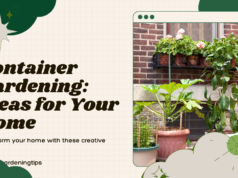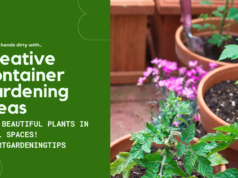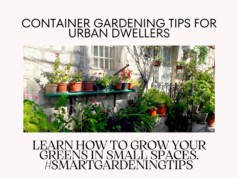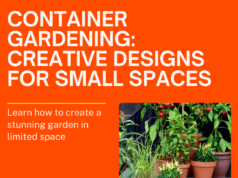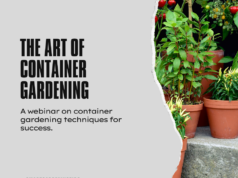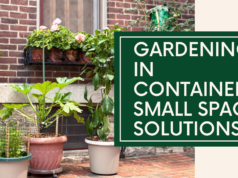
Do you dream of growing your own juicy, vine-ripened tomatoes, but only have a limited gardening area? Don’t worry! With the right tomato plants and some helpful tips, you can still enjoy a bountiful harvest, even in small spaces.
In this article, we will guide you through the world of tomato plants for small spaces, sharing our top picks and insider tips to help you maximize your harvest. Whether you have a tiny backyard, a balcony, or even just a hanging basket, you can transform your compact area into a thriving tomato garden.
Key Takeaways:
- Choose compact tomato plant varieties that are suitable for small spaces.
- Consider cherry tomato plants, patio tomato plants, hanging basket tomato plants, and dwarf tomato plants.
- Maximize your space by intercropping with other compatible plants and using container strategies.
- Provide your tomato plants with the right soil, nutrients, watering, and sunlight.
- Be mindful of pest and disease management and learn to prune and support your tomato plants effectively.
Cherry Tomato Plants for Small Spaces
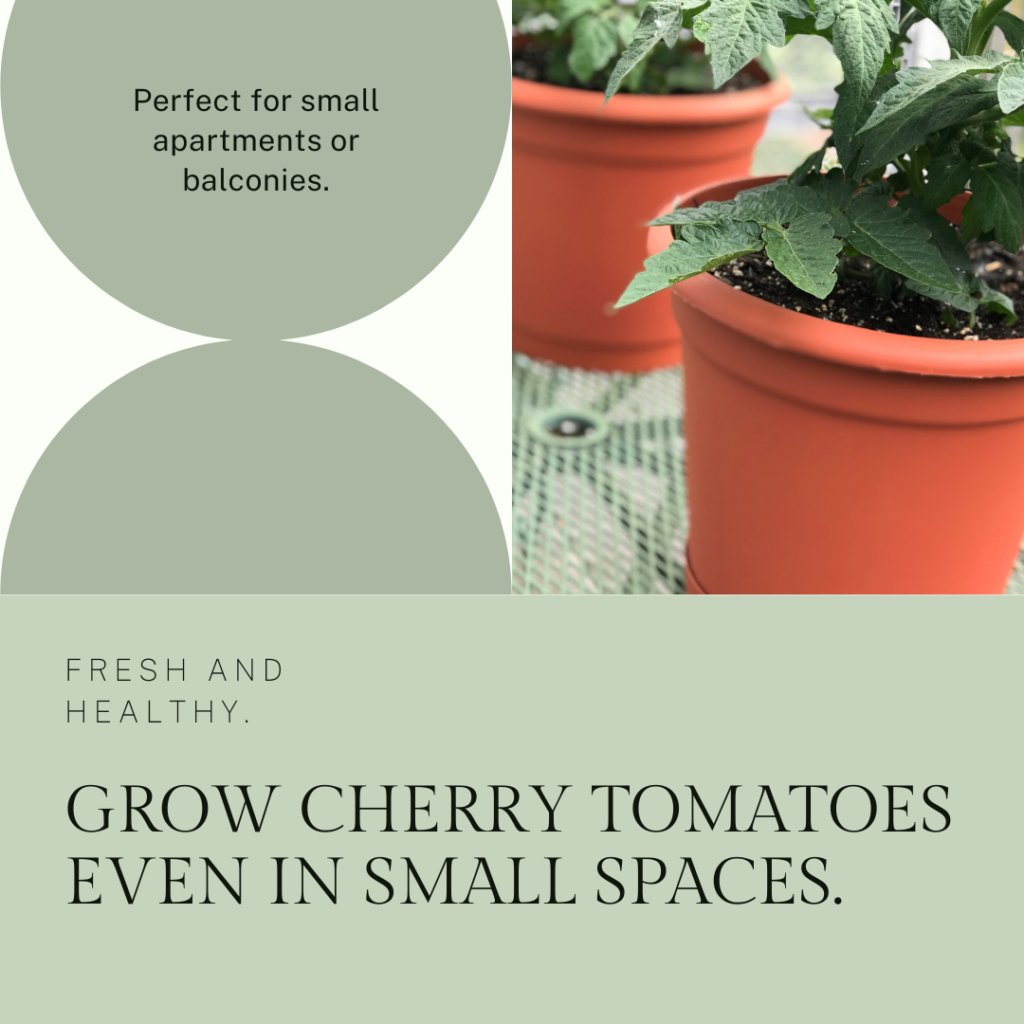
If you have limited space but want to enjoy the taste of homegrown tomatoes, cherry tomato plants are the perfect option. These small and compact plants are known for their abundant fruit production, making them ideal for small spaces. Not only do they offer a bountiful harvest, but they also add a pop of vibrant color to your garden or balcony.
There are several cherry tomato plant varieties specifically bred to thrive in smaller spaces. Let’s take a look at some top picks:
- Sweet 100: This popular variety produces an abundance of extra sweet and juicy cherry tomatoes. It’s a vigorous plant that can reach up to 6 feet in height, but it’s still manageable in small spaces.
- Roma: While typically associated with plum tomatoes, Roma also offers a cherry tomato variety. It has a dense growth habit and produces flavorful tomatoes that are perfect for fresh eating or canning.
- Yellow Pear: This heirloom variety is cherished for its unique yellow color and sweet taste. It produces small pear-shaped tomatoes that are both delicious and visually appealing.
- Sungold: Known for its exceptional sweetness, Sungold cherry tomatoes are a favorite among gardeners. The plants are compact and productive, making them a great choice for small spaces.
To ensure a successful harvest in limited space, here are some essential tips for growing cherry tomato plants:
- Choose the right container: Opt for containers that have a minimum depth of 12 inches and provide adequate drainage.
- Place them in a sunny spot: Cherry tomato plants thrive in full sun, so make sure to position them in an area that receives at least 6-8 hours of direct sunlight per day.
- Provide support: Use stakes, cages, or trellises to support the plants and prevent them from sprawling.
- Water regularly: Keep the soil consistently moist, but avoid overwatering, as it can lead to root rot. Water deeply whenever the top inch of soil feels dry.
- Fertilize appropriately: Apply a balanced fertilizer every few weeks to provide the plants with the necessary nutrients.
- Prune for airflow: Remove any suckers that develop in the leaf axils to promote better airflow and prevent overcrowding.
By selecting the right cherry tomato plant varieties and implementing these tips, you can enjoy a delicious harvest of sweet and tangy cherry tomatoes, even in the smallest of spaces.
Patio Tomato Plants: Ideal for Small Spaces

If you have a patio or limited outdoor area, patio tomato plants are a great option. They are specifically bred to thrive in small containers and produce delicious tomatoes. Patio tomato plants are perfect for urban gardens, balconies, or any small space where traditional gardening may not be feasible.
When choosing patio tomato plants, there are several recommended varieties to consider. These varieties have been selected for their compact growth habit, disease resistance, and exceptional flavor. Here are a few top picks:
- Red Robin: This variety produces clusters of sweet, juicy cherry tomatoes and is well-suited for container gardening. Its compact size makes it perfect for small spaces.
- Tumbler: Tumbler tomatoes have a cascading growth habit, making them ideal for hanging baskets or vertical gardening. They produce an abundance of flavorful tomatoes throughout the season.
- Window Box Roma: This compact Roma tomato variety is specifically bred for small containers and compact spaces. It is perfect for patio gardens and produces excellent yields of meaty, flavorful tomatoes.
Cultivating patio tomato plants in small areas requires careful attention to their growing conditions. Here are some tips to help you maximize their growth and yield:
- Choose a container that is at least 12 inches deep with good drainage.
- Use a high-quality potting mix enriched with organic matter to provide nutrients.
- Place your patio tomato plants in a location that receives at least six to eight hours of direct sunlight daily.
- Water your plants consistently, ensuring the soil is evenly moist but not waterlogged.
- Fertilize regularly with a balanced tomato fertilizer to promote healthy growth and fruit development.
- Prune your plants to remove suckers and improve air circulation, which helps prevent disease.
By following these tips and choosing the right patio tomato plant varieties, you can create a thriving garden in even the smallest of spaces. Enjoy the convenience and delicious harvests that patio tomatoes bring to your urban or compact gardening adventures.
Hanging Basket Tomato Plants for Compact Environments

When it comes to growing tomatoes in small spaces, hanging basket tomato plants are a game-changer. These versatile plants can be suspended from hooks, railings, or even overhead structures, allowing you to make the most of your vertical space. In this section, we will explore the best options for hanging basket tomato plants and provide you with valuable tips for caring for them in a compact environment.
One of the advantages of hanging basket tomato plants is their ability to thrive in limited spaces. With their cascading growth habit, they add a touch of beauty to any compact garden, balcony, or patio. Additionally, hanging baskets provide excellent drainage, making them ideal for avoiding waterlogging and ensuring healthy root development.
Best Hanging Basket Tomato Plant Options
| Variety | Description |
|---|---|
| Alice’s Hanging Basket | A prolific cherry tomato plant with a trailing habit, perfect for small spaces. |
| Tornado Tomato | A compact determinate variety that produces red, juicy tomatoes in abundance. |
| Sweetheart of the Patio | A petite cherry tomato plant that yields an abundance of sweet, bite-sized fruit. |
These are just a few examples of hanging basket tomato plant varieties that perform exceptionally well in compact environments. Depending on your preferences and available space, you can choose from a wide range of cherry, determinate, or dwarf tomato plants.
Tips for Caring for Hanging Basket Tomato Plants in a Compact Environment
- Location: Hang your baskets in a spot that receives at least 6 hours of direct sunlight daily.
- Watering: Check the moisture level of the soil regularly and water when the top inch feels dry. Avoid overwatering, as it can lead to root rot.
- Fertilization: Use a balanced tomato fertilizer every two weeks to provide essential nutrients for vigorous growth and abundant fruiting.
- Pruning: Remove any suckers that develop between the main stem and branches to encourage optimal airflow and prevent overcrowding.
- Support: Consider using plant ties or trellises to support the trailing branches and prevent them from touching the ground.
“Hanging basket tomato plants are a fantastic solution for those with limited space. Their cascading growth habit and convenient placement make it easy to enjoy homegrown tomatoes, even in the smallest of environments. With the right care and attention, you can savor the taste of fresh tomatoes straight from your hanging baskets.”
By selecting the best hanging basket tomato plant options and following these caring tips, you can create a lush and productive tomato garden in even the most compact environment. Don’t let limited space deter you from the joy of growing your own tomatoes. Embrace hanging baskets as a creative solution and enjoy the bounty of delicious, homegrown tomatoes.
Dwarf Tomato Plants: Compact and Productive
Dwarf tomato plants are the perfect choice for small spaces, offering compact size without compromising on productivity. These specially bred varieties are designed to thrive in limited areas, making them ideal for small gardens, balconies, or even indoor cultivation. Let’s explore some of the best selections of dwarf tomato plants for small spaces and learn how to maintain and harvest them effectively.
Selections of Dwarf Tomato Plants
When choosing dwarf tomato plants for your small space, consider factors like taste, disease resistance, and growth habit. Here are a few recommended varieties:
- TomThumb: A popular choice, TomThumb produces cherry-sized red tomatoes that are bursting with flavor. This compact plant reaches a height of about 12 inches, making it suitable for container gardening.
- Patio Princess: Another excellent option, Patio Princess yields medium-sized tomatoes on compact vines. This variety grows to around 18 inches in height and is well-suited for patio containers.
- Cherry Grande: If you love cherry tomatoes, Cherry Grande is a fantastic choice. It produces an abundance of sweet, juicy fruits on compact plants that typically grow up to 18 inches tall.
These are just a few examples of dwarf tomato plant selections. Explore the wide range of options available and choose the ones that best meet your preferences and the growing conditions in your small space.
Maintenance and Care
Dwarf tomato plants require proper care to ensure healthy growth and maximum productivity. Here are some maintenance tips for cultivating these compact plants:
- Planting: Choose well-draining soil enriched with organic matter and plant your dwarf tomato plants in containers or raised beds suitable for small spaces.
- Watering: Regular and consistent watering is important for dwarf tomatoes, as they can dry out quickly due to their smaller root systems. Provide sufficient moisture, keeping the soil evenly moist but not waterlogged.
- Fertilizing: Feed your plants with a balanced fertilizer according to the manufacturer’s instructions. Consider using slow-release fertilizers to provide nutrients gradually over time.
- Support: Although dwarf tomato plants are compact, they may still benefit from some support. Use stakes, cages, or trellises to help keep the plants upright and prevent sprawling.
- Pruning: Regularly remove suckers (extra side shoots) to maintain the desired shape and improve airflow around the plants. This helps reduce the risk of diseases and encourages better fruit development.
Harvesting Dwarf Tomatoes
The joy of growing dwarf tomato plants is being able to harvest your own fresh and flavorful tomatoes within a small space. Follow these tips for successful harvesting:
- Observe the tomatoes closely for signs of ripeness. Look for vibrant color and a slight give when gently squeezed.
- Use clean shears or pruners to cut the tomatoes from the vines, leaving a short stem attached.
- Harvest tomatoes when they are fully ripe for the best flavor. However, if you need to extend the shelf life, you can pick them slightly underripe and allow them to ripen indoors.
- Enjoy the delicious flavor of your freshly harvested dwarf tomatoes in salads, sandwiches, sauces, or any recipe that calls for the vibrant taste of homegrown tomatoes!
With proper selection, care, and harvesting techniques, your small space can transform into a fruitful haven of abundant and flavorful dwarf tomatoes.
Maximizing Space: Intercropping and Container Strategies
When dealing with limited space in your garden, it’s crucial to make every inch count. Maximizing space allows you to grow more and achieve a bountiful harvest, even in small areas. In this section, we will explore two effective strategies for maximizing space: intercropping and container gardening.
Intercropping with Compatible Plants
Intercropping is a smart technique that involves growing different plants together in the same space. By choosing plants that complement each other, you can take advantage of every available area and increase your overall productivity. When it comes to tomatoes, intercropping can be particularly beneficial, as certain plants help deter common tomato pests and diseases, while others enhance soil fertility and nutrient uptake.
Here are some examples of compatible plants for intercropping with tomatoes:
- 1. Basil: This aromatic herb repels pests like aphids and spider mites, making it an excellent companion plant for tomatoes. Its compact size also makes it a suitable choice for small spaces.
- 2. Marigolds: Marigolds release chemicals that repel nematodes, which are microscopic worms that can damage tomato plant roots. Planting marigolds around your tomato plants can help protect them from these pests.
- 3. Nasturtiums: These beautiful, edible flowers attract beneficial insects like ladybugs and hoverflies, which feed on tomato pests like aphids and whiteflies. Nasturtiums also have a trailing habit, making them ideal for growing in hanging baskets or containers.
Intercropping not only maximizes space but also promotes biodiversity in your garden, creating a balanced ecosystem that supports the health and growth of your tomato plants.
Container Strategies for Small Spaces
Container gardening is a popular choice for small space gardening, allowing you to grow tomatoes even if you lack a traditional garden bed. Containers offer flexibility, enabling you to move your plants around to optimize sunlight exposure and available space. Here are some container strategies to consider:
“Container gardening is a versatile and convenient way to grow tomatoes in small areas. Regardless of your available space, you can create a thriving vegetable garden by strategically using containers.”
1. Vertical Gardening: Utilize vertical space to the fullest by growing tomatoes in tall containers or installing trellises and stakes. This method not only saves ground space but also promotes better air circulation and minimizes the risk of soil-borne diseases.
2. Hanging Baskets: Hang your tomato plants in baskets or containers to utilize overhead space. This technique is ideal for balconies, porches, or any area where floor space is limited. Choose hanging baskets specifically designed for tomatoes or use sturdy containers with proper drainage holes.
3. Stacking Containers: Take advantage of vertical space by stacking multiple containers on top of each other. This method is particularly useful if you have a limited floor area but ample height. Select containers of different sizes, ensuring that the lower ones can support the weight of the upper containers.
By implementing these container strategies, you can create a visually appealing and highly productive tomato garden, even in the smallest of spaces.
Maximizing space in your small garden is essential for growing a successful tomato crop. Intercropping and container gardening provide practical solutions that allow you to make the most of your limited area. Combining different plants and utilizing containers creatively not only maximizes space but also enhances the health and productivity of your tomato plants.
Soil and Nutrients: Key Factors for Success

Providing your tomato plants with the right soil and nutrients is crucial for their success. In a compact space, proper soil quality and fertilization practices are even more important to ensure your tomato plants thrive. Here, we will delve into the importance of soil quality, proper fertilization, and organic approaches to help you keep your tomato plants healthy and productive.
Importance of Soil Quality
High-quality soil is the foundation for healthy tomato plants. It provides necessary nutrients, good drainage, and optimal root development. When selecting soil for your small space tomato plants, consider using a well-draining soil mix rich in organic matter. This will promote root growth and prevent waterlogging, which can lead to root rot and other diseases.
Proper Fertilization
Tomato plants are heavy feeders, meaning they require ample nutrients to produce a bountiful harvest. In a small space, it’s crucial to provide your tomato plants with the right nutrients in the right quantities. Before planting, amend your soil with well-rotted compost or organic matter to enrich its nutrient content.
During the growing season, regular fertilization is essential. Use a balanced, slow-release organic fertilizer rich in nitrogen, phosphorus, and potassium to promote healthy growth and fruit production. Follow the recommended application rates on the fertilizer packaging and avoid over-fertilizing, which can lead to excessive foliage growth at the expense of fruit development.
Organic Approaches
Organic gardening practices can help you maintain healthy tomato plants while minimizing the use of synthetic fertilizers and pesticides. Consider incorporating organic matter, such as compost or well-rotted manure, into your soil before planting. This will enhance soil fertility and improve its structure.
‘Organic gardening practices can help you maintain healthy tomato plants while minimizing the use of synthetic fertilizers and pesticides.’
Additionally, practicing crop rotation and intercropping with companion plants can help improve soil health and reduce the risk of soil-borne diseases. Some beneficial companion plants for tomatoes include basil, marigold, and chives. These plants can help repel pests, attract pollinators, and provide natural pest control.
Essential Nutrients for Tomato Plants
| Nutrient | Function | Sources |
|---|---|---|
| Nitrogen (N) | Promotes foliage growth and overall plant vigor | Compost, manure, blood meal, fish emulsion |
| Phosphorus (P) | Facilitates flower and fruit development | Bone meal, rock phosphate, worm castings |
| Potassium (K) | Enhances plant resilience and fruit quality | Wood ash, kelp meal, banana peels |
| Calcium (Ca) | Prevents blossom end rot, a common tomato plant disorder | Eggshells, gypsum, dolomitic lime |
| Magnesium (Mg) | Aids in chlorophyll production and photosynthesis | Epsom salt, kelp meal, compost |
Source: Adapted from various gardening resources and expert recommendations.
Remember to regularly test your soil’s pH levels to ensure it remains within the optimal range for tomato plant growth, which is typically between 6.0 and 6.8. pH testing kits are readily available at garden centers and can help you adjust the soil’s acidity or alkalinity as needed.
By providing your tomato plants with the right soil and nutrients, you can create a strong foundation for their growth and ensure a successful harvest in your small space garden. The next section will focus on the essential care required for watering and sunlight to further support your tomato plants’ health and productivity.
Watering and Sunlight: Essential Care for Tomato Plants
Proper care is essential for the health and productivity of your tomato plants. Adequate watering and sunlight are two key factors that contribute to their overall well-being. In this section, we will provide guidance on watering techniques, sunlight requirements, and how to ensure your tomato plants receive the necessary care in a limited space.
Watering Techniques
Watering your tomato plants correctly is crucial to prevent over or under-watering, both of which can negatively impact their growth and yield. Here are some watering techniques to consider:
- Consistent Moisture: Tomatoes prefer consistently moist soil. Water them regularly, making sure the soil is neither too dry nor waterlogged. Aim for a deep watering, allowing the water to penetrate the root zone.
- Deep Watering: It’s better to water deeply, less frequently, rather than applying small amounts of water frequently. This encourages the roots to grow deeper into the soil, resulting in healthier and more resilient plants.
- Morning Watering: Water your tomato plants in the morning to allow the foliage to dry off during the day. Avoid watering in the evening to prevent excessive moisture that can lead to fungal diseases.
Sunlight Requirements
Tomato plants require an adequate amount of sunlight to thrive and produce quality fruit. Here are some tips to ensure they get the right amount of sunlight:
- Full Sun Exposure: Tomato plants thrive in full sun, which means they need at least 6-8 hours of direct sunlight every day. Choose a location for your tomato plants with maximum sun exposure.
- Optimal Orientation: If you’re growing tomatoes in containers or limited space, position them where they receive the most sunlight throughout the day. Consider the angle of the sun and adjust the orientation accordingly for optimal sunlight exposure.
- Reflective Surfaces: To maximize sunlight exposure, consider placing reflective surfaces near your tomato plants. This can help redirect sunlight onto the foliage, ensuring better photosynthesis and overall plant growth.
Incorporating proper watering techniques and ensuring adequate sunlight for your tomato plants will contribute to their overall health and productivity. Remember to monitor the moisture level of the soil regularly and adjust your watering schedule accordingly. Additionally, pay attention to any signs of inadequate sunlight, such as spindly growth or pale leaves, and make necessary adjustments to optimize their sun exposure.
| Watering Tips | Sunlight Tips |
|---|---|
| Consistent moisture | Full sun exposure |
| Deep watering | Optimal orientation |
| Morning watering | Reflective surfaces |
Pest and Disease Management in Small Spaces
Even in small spaces, tomato plants can be susceptible to pests and diseases. It’s essential to be proactive and take appropriate measures to protect your plants and ensure a successful harvest. In this section, we will discuss common issues you may encounter and provide practical tips for pest and disease management in small spaces.
Common Pests in Small Space Tomato Gardens
Tomato plants can attract various pests that can cause damage to leaves, stems, and fruits. Here are some common pests you may encounter:
- Aphids: These tiny insects suck sap from the plant, causing wilting and distortion.
- Whiteflies: Whitefly infestations can lead to yellowing of leaves and the spread of diseases.
- Hornworms: These large caterpillars can quickly defoliate tomato plants.
To manage these pests:
- Regularly inspect your tomato plants for signs of infestation.
- Remove affected leaves or use a strong stream of water to dislodge pests.
- Apply organic insecticidal soap or neem oil to control aphids and whiteflies.
- Encourage natural predators such as ladybugs and lacewings.
Common Diseases in Small Space Tomato Gardens
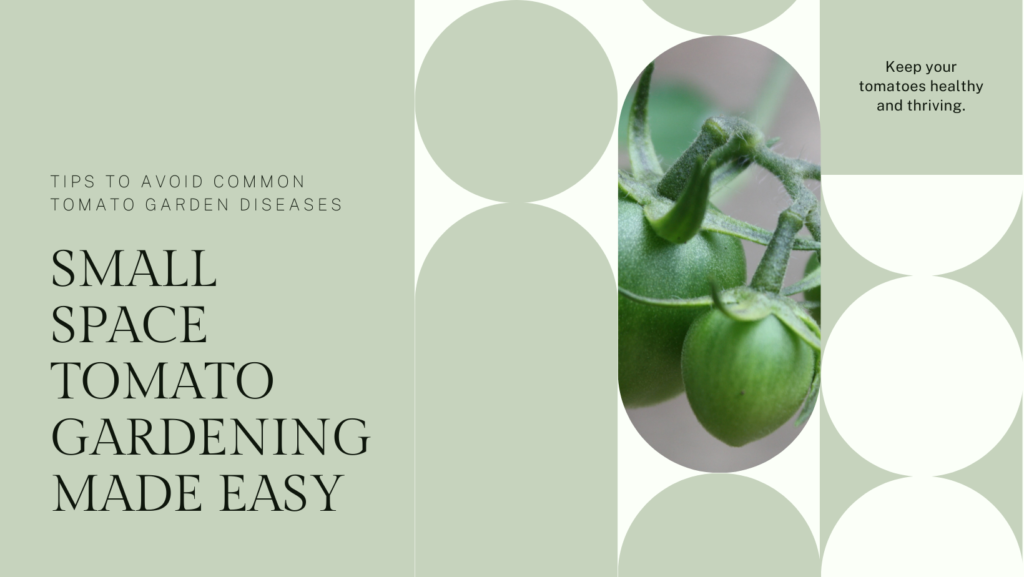
Tomato plants are susceptible to various diseases, which can impact their growth and productivity. Here are some common diseases you may encounter:
- Early Blight: This fungal disease causes browning and yellowing of leaves.
- Late Blight: Late blight leads to dark, water-soaked spots on leaves and fruits.
- Septoria Leaf Spot: Septoria leaf spot causes small, circular lesions on leaves.
To manage these diseases:
- Practice good sanitation by removing and disposing of infected plant material.
- Water at the base of the plant to avoid wetting the leaves.
- Apply copper-based fungicides or organic alternatives to control fungal diseases.
- Rotate tomato plants annually to prevent disease buildup in the soil.
Preventative Measures for Pest and Disease Management
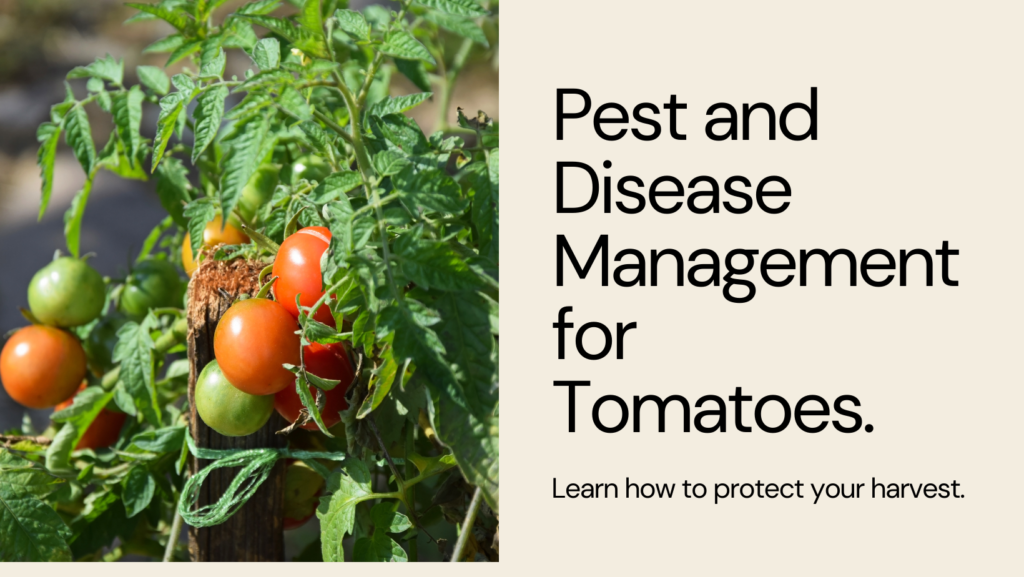
Implementing preventative measures can significantly reduce the risk of pests and diseases in your small space tomato garden. Here are some tips:
“An ounce of prevention is worth a pound of cure.”
– Benjamin Franklin
- Choose disease-resistant tomato varieties when possible.
- Ensure proper spacing between plants to promote good airflow.
- Avoid overwatering, as excess moisture can lead to disease development.
- Mulch around the base of plants to suppress weeds and conserve moisture.
By implementing these pest and disease management strategies, you can protect your tomato plants in small spaces and enjoy a bountiful harvest of healthy, delicious tomatoes.
Pruning and Supporting Tomato Plants in Compact Areas

Pruning and supporting your tomato plants correctly is crucial, especially in small spaces where they can quickly become overcrowded. By implementing these practices, you can ensure good airflow, healthy growth, and a bountiful harvest.
Pruning tomato plants involves removing the side shoots, also known as suckers, that grow between the main stem and the leaf branches. This helps redirect the plant’s energy to the main stem, allowing it to grow stronger and produce larger, tastier tomatoes. To prune your tomato plants in compact areas, follow these steps:
- Start pruning when your tomato plants have developed their first set of true leaves.
- Identify the side shoots that emerge in the leaf axils.
- Using clean and sharp pruning shears, carefully remove these side shoots.
- Continue monitoring your tomato plants regularly and remove any new side shoots that appear.
Supporting your tomato plants is essential to prevent them from sprawling on the ground and occupying valuable space. It also helps promote better air circulation, reducing the risk of diseases. Here are some effective methods for supporting tomato plants in compact areas:
- Cages: Place sturdy wire cages around your tomato plants to provide support as they grow. This method is ideal for determinate tomato varieties that don’t require extensive pruning.
- Trellises: Install trellises or stakes next to your tomato plants and secure them using soft ties or garden twine. As your plants grow, gently tie the main stems to the support structure to keep them upright.
- Vertical Gardens: Utilize vertical gardening techniques such as using a wall-mounted trellis or hanging bags to grow your tomato plants. This allows you to maximize vertical space and create a visually appealing display.
Remember to adjust the level of pruning and support based on the growth and size of your tomato plants. Proper pruning and support will promote healthier plants, improve fruit quality, and maximize your yield in compact areas.
Harvesting and Enjoying Your Small Space Tomatoes

The moment you’ve been waiting for has arrived – harvesting your homegrown tomatoes! After careful nurturing and tending, it’s time to reap the rewards of your labor. But how do you know when your small space tomatoes are ready to be harvested?
When it comes to harvesting tomatoes, it’s essential to look for the signs of ripeness. Here are some indicators that your tomatoes are at their peak:
- Color: Ripe tomatoes will have vibrant hues, depending on the variety. Look for a deep red, orange, yellow, or even a rich purple color that is uniform throughout the fruit.
- Firmness: Gently squeeze the tomatoes – they should feel firm but still yield slightly to pressure. Avoid picking overly soft or mushy ones, as they may be overripe.
- Texture: A ripe tomato should have a smooth and glossy skin, without any blemishes or wrinkles. Be sure to inspect each tomato for any signs of damage or rot.
- Aroma: Bring a tomato close to your nose and take a whiff. A truly ripe tomato will have a sweet and enticing aroma that promises a burst of flavor.
Once you’ve determined that your tomatoes are ready for harvesting, it’s time to gather your tools. You’ll need a pair of sharp garden scissors or pruners to cut the stems cleanly, avoiding unnecessary damage to the plant.
When harvesting your small space tomatoes, follow these proper techniques:
- Hold the tomato close to the stem
- Use your garden scissors or pruners to make a clean, diagonal cut, leaving a short stem attached to the fruit
- Be careful not to crush or bruise the tomatoes during the harvesting process
- Gently place the harvested tomatoes in a basket or container, taking care not to overcrowd or stack them to prevent any damage
Now that you have a bountiful harvest of small space tomatoes, it’s time to enjoy the fruits of your labor. Whether you’re a fan of classic caprese salads, tangy tomato sauces, or fresh salsas, there are countless ways to savor the deliciousness of homegrown tomatoes.
Here are some ideas for enjoying your small space tomatoes:
“The tomato, to me, is the finest summer food – and certainly the most varied. It can be the centerpiece of the simplest of recipes, or it can achieve gastronomic heights when combined with certain ingredients.” – Peter Reinhart
1. Classic Caprese Salad
Slice your small space tomatoes and pair them with fresh mozzarella and fragrant basil leaves. Drizzle with olive oil, balsamic vinegar, salt, and pepper for a light and refreshing salad that celebrates the flavors of summer.
2. Homemade Tomato Sauce
Simmer your small space tomatoes with garlic, onions, and herbs to create a flavorful tomato sauce. Use it as a base for pasta dishes, pizzas, or as a dipping sauce for bread. The possibilities are endless.
3. Tomato Bruschetta
Top slices of toasted bread with diced small space tomatoes, garlic, red onion, and fresh basil. Finish with a drizzle of balsamic glaze for a simple yet elegant appetizer or snack.
4. Fresh Salsa
Combine diced small space tomatoes, onions, jalapeños, cilantro, and lime juice for a zesty homemade salsa. Pair with tortilla chips or use as a topping for tacos and grilled meats.
Remember, the joy of growing your own small space tomatoes extends beyond harvesting and enjoying the fruits of your labor. The process itself is rewarding and satisfying, as you witness the transformation from tiny seedlings to flourishing plants. So savor every bite and revel in the knowledge that you’ve nurtured these tomatoes from start to finish.
This vibrant image showcases the beauty and variety of small space tomatoes you can grow in your own garden or small outdoor area. From the classic red beefsteak to the sweet cherry tomatoes, each variety offers a burst of flavor that will elevate your culinary creations.
FAQ
Q. What are the top tomato plants for small spaces?
A. Some of the top tomato plants for small spaces include cherry tomato plants, patio tomato plants, hanging basket tomato plants, and dwarf tomato plants.
Q. Which cherry tomato plant varieties are recommended for small spaces?
A. Some recommended cherry tomato plant varieties for small spaces are ‘Sweet 100’, ‘Tiny Tim’, and ‘Sun Gold’.
Q. What are some tips for growing cherry tomato plants in limited space?
A. To grow cherry tomato plants in limited space, consider using containers, trellises, or hanging baskets. Ensure they receive at least 6-8 hours of sunlight daily and provide regular watering and fertilization.
Q. What are patio tomato plants, and why are they ideal for small spaces?
A. Patio tomato plants are compact varieties specifically bred to thrive in small containers or areas with limited space. They are perfect for small gardens, balconies, or even indoor cultivation.
Q. What patio tomato plant varieties are recommended for small spaces?
A. Some recommended patio tomato plant varieties for small spaces include ‘Bush Early Girl’, ‘Patio Princess’, and ‘Celebrity’.
Q. How can I cultivate patio tomato plants successfully in small areas?
A. To cultivate patio tomato plants successfully in small areas, make sure they have well-draining soil, provide regular watering, and consider using containers or raised beds. Pruning and supporting the plants can also help optimize their growth.
Q. What are hanging basket tomato plants, and why are they suitable for compact environments?
A. Hanging basket tomato plants are tomato varieties specifically adapted for hanging baskets or containers that utilize vertical space. They are an excellent choice for compact environments with limited ground space.
Q. Which are the best hanging basket tomato plant options?
A. Some of the best options for hanging basket tomato plants include ‘Tumbler’, ‘Red Robin’, and ‘Tiny Tim’.
Q. How do I care for hanging basket tomato plants in a compact environment?
A. When caring for hanging basket tomato plants in a compact environment, ensure they receive adequate sunlight, water them regularly, and provide adequate support to prevent the baskets from becoming too heavy.
Q. What are dwarf tomato plants, and why are they suitable for small spaces?
A. Dwarf tomato plants are specially bred to be shorter in stature, making them ideal for small spaces such as gardens or even indoor cultivation. They still provide an abundance of tomatoes despite their compact size.
Q. What are some ideal dwarf tomato plant selections for small spaces?
A. Some ideal dwarf tomato plant selections for small spaces include ‘Red Robin’, ‘Tiny Tim’, and ‘Husky Cherry Red’.
Q. How do I maintain and harvest dwarf tomato plants in small spaces?
A. To maintain and harvest dwarf tomato plants in small spaces, provide them with well-draining soil, regular watering, and sufficient sunlight. Prune and support them when necessary, and harvest the ripe tomatoes as they become ready.
Q. What strategies can I use to maximize space when growing tomato plants in small areas?
A. To maximize space when growing tomato plants in small areas, consider intercropping tomatoes with other compatible plants, such as herbs or lettuce. Additionally, utilize container strategies such as vertical gardening or hanging planters to make the most of confined spaces.
Q. How important is soil quality and nutrient management for tomato plants in small spaces?
A. Soil quality and nutrient management are crucial for the success of tomato plants in small spaces. Use well-draining, nutrient-rich soil and consider organic fertilization methods to ensure your tomatoes receive the necessary nutrients for healthy growth.
Q. What are some essential care tips for watering and providing sunlight to tomato plants in small spaces?
A. When watering tomato plants in small spaces, it’s crucial to provide regular but not excessive watering. Ensure the soil is moist but not waterlogged. For sunlight, aim for at least 6-8 hours of direct sunlight daily, positioning your tomato plants in the sunniest spot available.
Q. How can I manage pests and diseases when growing tomato plants in small spaces?
A. When growing tomato plants in small spaces, keep an eye out for pests such as aphids, caterpillars, or fungal diseases like blight. Implement preventative measures such as proper spacing, regular inspection, and organic pest control methods to manage these issues.
Q. Is pruning and supporting tomato plants necessary in compact areas?
A. Yes, pruning and supporting tomato plants are essential in compact areas to prevent overcrowding, provide good airflow, and support the weight of the fruit. Pruning helps redirect energy to fruit production, resulting in healthier and more productive plants.
Q. How do I harvest and enjoy tomatoes grown in small spaces?
A. To harvest and enjoy tomatoes grown in small spaces, carefully observe the signs of ripeness such as color and firmness. Gently twist or cut the tomatoes from the vine, being careful not to bruise them. These delicious homegrown tomatoes can be enjoyed fresh in salads, sandwiches, or used in various culinary creations.
Conclusion
By choosing the right tomato plants and implementing our tips for small space cultivation, you can successfully grow and enjoy an abundance of fresh, flavorful tomatoes, no matter how limited your gardening area may be. With a variety of options available, including cherry tomatoes, patio tomatoes, hanging basket varieties, and dwarf plants, you can find the perfect tomato plants for your small space.
Maximizing your space is key to a successful harvest. Consider intercropping tomatoes with other compatible plants to make the most of every inch. Additionally, utilizing containers and vertical gardening techniques, such as hanging baskets, can significantly increase your tomato yield.
Proper care and maintenance are essential for healthy tomato plants. Ensure your plants receive adequate watering and sunlight, and provide them with nutrient-rich soil. Regular pruning and proper support will prevent overcrowding and promote good airflow, reducing the risk of pests and diseases. With these strategies in place, you can enjoy a bountiful harvest of delicious, homegrown tomatoes.
Embrace the rewarding experience of growing your own tomatoes in a small space. From seed to harvest, rejoice in the flavors of your labor and create mouthwatering dishes with your freshly harvested tomatoes. Whether it’s a vibrant salsa, a classic caprese salad, or a rich tomato sauce, the possibilities are endless. Start your small space tomato garden today and savor the incredible taste of your homegrown harvest!


